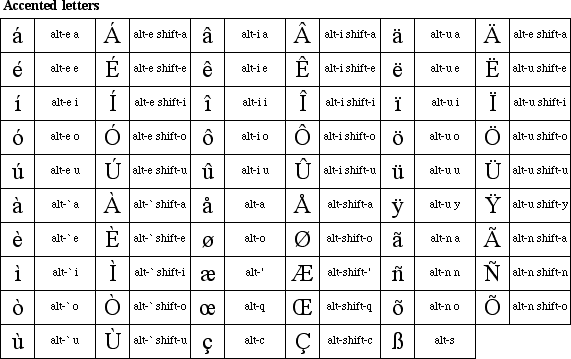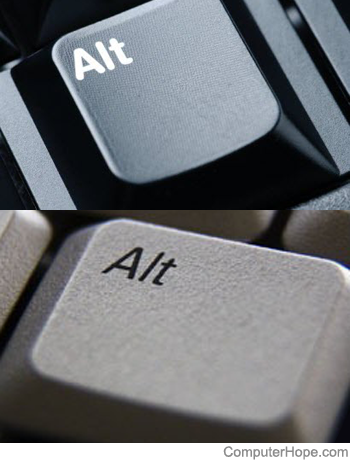

- #NO ALT KEY ON MAC WINDOWS 10#
- #NO ALT KEY ON MAC PC#
- #NO ALT KEY ON MAC WINDOWS 8#
- #NO ALT KEY ON MAC PROFESSIONAL#
Since release 1903, versions of Windows 10 have the binding: On current versions it is referred to as Polish (214). Older Polish versions of Microsoft Windows used this layout, describing it as Polish layout. Computer keyboards with this layout are available, though difficult to find, and supported by a number of operating systems they are known as Polish typists' layout ( klawiatura polska maszynistki).
#NO ALT KEY ON MAC PROFESSIONAL#
This layout is referred to as Polish programmers' layout ( klawiatura polska programisty) or simply Polish layout.Īnother layout is still used on typewriters, mostly by professional typists. Nowadays most PCs in Poland have standard US keyboards and use the AltGr method to enter Polish diacritics. An established method was to use AltGr in combination with the relevant Latin base letter to obtain a precomposed character with a diacritic note the exceptional combination using x instead of the base letter z, as the Latin base letter has been reserved for another combination:Īt the time of the political transformation and opening of commercial import channels this practice was so widespread that it was adopted as the de facto standard.

Most had US keyboards, and various methods were devised to make special Polish characters available. When personal computers became available worldwide in the 1980s, commercial importing into Poland was not supported by its communist government, so most machines in Poland were brought in by private individuals. Typewriters in Poland used a QWERTZ layout specifically designed for the Polish language with accented characters obtainable directly. The Finnish multilingual keyboard standard adds many new characters to the traditional layout via the AltGr key, as shown in the image below (the blue characters can be written with the AltGr key several dead key diacritics, shown in red, are also available as an AltGr combination). AltGr+ 5 → € (NO, DK, FO, SE, sometimes FI).

Generally the AltGr key can be used to create the following characters: The keyboard layouts in the Nordic countries ( Denmark (DK), Faroe Islands (FO), Finland (FI), Norway (NO) and Sweden (SE) as well as in Estonia (EE)) are largely similar to each other. AltGr+ S → ß (German eszett aka sharp s) and §.AltGr+ T → þ and Þ (Icelandic and Old English thorn).

The US international keyboard (see below) is a popular alternative in the Netherlands On Hebrew keyboards, AltGr enables the user to type the following characters: Some of these key combinations also result in different characters if the polytonic layout is used.
#NO ALT KEY ON MAC WINDOWS 8#
Windows 8 introduced the ability of pressing AltGr+ ⇧ Shift+ ß to produce ẞ ( capital ß).
#NO ALT KEY ON MAC PC#
On a typical Windows-compatible PC keyboard, the AltGr key, when present, takes the place of the right-hand Alt key: if not engraved as such, that key may still be remapped to behave as though it is, (or emulated using a chord such as Ctrl+Alt). It is primarily used to type characters that are not widely used in the territory where sold, such as foreign currency symbols, typographic marks and accented letters. (The AltGr key, located immediately to the right of the Space bar, does not appear in this photo.)ĪltGr (also Alt Graph) is a modifier key found on many computer keyboards (rather than a second Alt key found on US keyboards). A keyboard with additional engravings showing the characters typed when AltGr is held down.


 0 kommentar(er)
0 kommentar(er)
